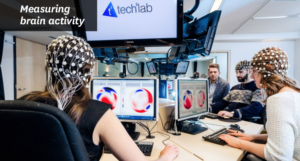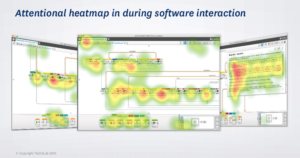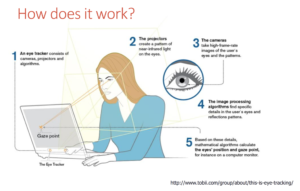In the past, measuring emotion and engagement are seem to be impossible, because the emotion is too abstract to be collected as data. Communication has become a regular way to collect users’ data, even though it can not be 100% correct. Without solid data, researchers can’t stay objective to develop a conclusion of the issue. Fortunately, some devices are invented to evaluate and collect emotion data. Before the introduction of those devices, here are some definitions of emotion from Billund.
DEFINITION OF EMOTION
- An active state of consciousness in which joy, sorrow, fear, hate, or the like, is experienced, as distinguished from cognitive and volitional states of consciousness.
- Any of the feelings of joy, sorrow, fear, hate, love, etc.
- Any strong agitation of the feelings actuated by experiencing love, hate, fear, etc., and usually accompanied by certain physiological changes, such as increased heartbeat or respiration, and often overt manifestation, such as crying or shaking.
- Something that causes such a reaction: the powerful emotion of a great symphony.
Andrew Schall pointed out that truly understanding the feelings of a user has always been a dream of user experience (UX) researchers. Current methods for understanding emotional response has been limited to self-reporting from study participants or qualitative methods such as surveys or focus groups. By observing user’s behaviors and noting reflections, research can analyze that information to come up with problem solutions. However, people’s brain is very complicated so as the mind process. If we can collect the data directly from the brain, we will know the original reflection of human’s brain which can help researchers make a big improvement on user testing project.
New biometric and neurometric devices allow us to collect behavioral data in ways that were not previously practical for user researchers.
New biometric and neurometric devices, which are practical, reasonably priced, and suitable for UX practitioners, have evoked both a substantial amount of enthusiasm and skepticism. Biometric and neurometric measurements allow researchers to collect behavioral data in ways that were not previously possible. Thanks to the improvement of technology, those methods can help researchers to understand the user’s emotional reaction at a certain point in time such as when a specific stimulus is displayed, or to catch the overall emotional reaction over a longer period of time that can include the entire interaction with the stimulus. Therefore, in order to create user-friendly products, those data can directly tell users which part should be modified.
Another way to measure emotion is eye-tracking. Using eye tracking we can detect where users are looking at a point in time. According to Andrew Schall, eye tracking is a methodology that helps researchers understand visual attention. Using eye tracking we can detect where users are looking at a point in time, how long they look at something and the path that their eye follows. To be more specific, the level of heat colors reflects the level of users’ attention. In the end, researchers can come up with a more comprehensive conclusion through a heat map because it’s easy to find which part of information attracts more attention. Moreover, Eye tracking has been applied to numerous fields including human factors, cognitive psychology, marketing, and the broad field of human-computer interaction.
Those methods have positive aspects and negative aspects. Albert points out some of them. However, I think the advantages outweigh the disadvantages because it’s better to collect more data to analyze which drives to more conclusive results. The disadvantages can be improved in the future. For instance, as the more data collected by experts, researchers can filtrate useless data by arithmetic which also reduces time-consuming and costs.
ADVANTAGES OF MEASURING UX EMOTIONS
• Critical insights, beyond the obvious – drive important design and business decisions
• More complete picture of the entire user experience
• Easier and less expensive than you think
DISADVANTAGES OF MEASURING UX EMOTIONS
• Noisy data –may be hard to interpret and concerns about reliability
• May be time-consuming and expensive
• Range of emotions may be limited and hard to measure
WORKS CITED
Schall, Andrew. New Methods for Measuring Emotional Engagement SPARK Experience, LLC
Denmark, Billund. May 5th, 2015, The learner is not a black box: Measuring emotion, engagement, and learning while playing
Albert, Bill. Ph.D., Executive Director, User Experience Center, Bentley



